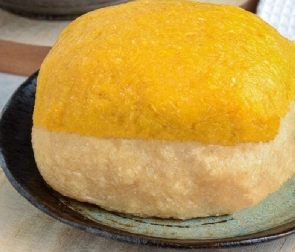Eba
Gari(eba) and related products are cassava-derived staples in Nigerian and Ghanaian cuisine. While carbohydrate-rich, they are inexpensive and easily accessible sources of essential nutrients. The question most people with diabetes ask is whether they can eat eba. I herein explain in this article.
Eba, diabetes and science
One older human study by Akanji et al.(1990) examined the effect of eba on 11 overnight fasted healthy non-diabetic volunteers. The study found that the blood sugar response after eating eba was immaterial. They conclude that cassava meals depend on the mode of preparation.
A subsequent study by Fagbayigbo (2012) in Ogun State evaluated the glycemic indices of Eba (made from Ijebu gari and Egba gari). The study showed that eba eaten with Ogbono soup had a high glycemic index (89-93 depending on the variety of gari). Another study by Oluba et al (2017) showed that bba made with yellow gari had a lower glycemic index (76.3) than eba made with white gari (85.7).
More recent studies: by Ogunsola, O (2022) investigated the quality evaluation and glycemic index of eba produced from yellow and white varieties of cassava at different fermentation days. Six samples of gari were taken on days 2,3 and 4. The different gari samples were made to produce eba, and it was served with Ogbono soup.
In this study, sixty healthy, non-diabetic human subjects were used for the study. The results obtained revealed that the glycemic index of the formulated eba ranged from 58.43 to 93.16 %. The yellow root gari fermented for four days had the lowest glycemic index of 58.43 % which falls under the medium glycemic index food range, this can be taken by a diabetic patient.
Low glycemic index foods are classified as being digested and absorbed slowly and high glycemic index foods as being rapidly digested and absorbed, resulting in different glycemic responses.
Another review study by Okoduwa and Abdulwaliyu(2022) revealed that the glycemic indices of many staples such as rice dough (Tuwo shinkafa), maize dough (tuwo masara), millet dough (tuwo gero), yam/cassava flour (amala), pounded fermented cassava (fufu, akpu), gari (eba), african salad (abacha), pounded yam (ema, iyan), rice (shinkafa, isesi), beans (wake, ewa, agwa), and plantain (ojoko, ogbagba, ogede) that are consumed in different parts of Nigeria are high (75.0%-97.0%).
However, available information revealed that less commonly consumed foods like maize pudding (igbangwu), dried beef floss (dambu), Fonio (acha), bean pudding (moi-moi) and tom brownvita (turnbrown) exhibit lower glycemic indices (14.1%-52.9%).
A previous study explained that the higher the fermentation period of cassava gari used for eba affects the glycemic index(N.C. Ihediohanma, 2011).
Glycemic Index
One important fact to note about foods that have high carbohydrate content such as gari is how quickly it raises the blood sugar level when consumed. What happens if you eat foods that have a high glycemic index (70-100) is that your blood sugar level rises rapidly giving you a burst of energy. This is then followed by storing fat in the body before you feel tired and then hungry again. This can be particularly problematic for people with diabetes mellitus and those who want to lose weight.
Foods that have a low glycemic index (≤55) have the opposite effect. You do not have a spike in blood sugar, glucose is released gradually into the bloodstream, you can manage your weight better and overall health can improve. Many vegetables have a low glycemic index.
Yellow gari for eba
The study explained that yellow Gari contains more fibre and sugar content compared to white gari and the beta carotene (vitamin A) is higher (Oluba et al 2017). It also has a favourable glycemic index as compared to white gari, thus good for diabetic patients.
Gari is produced by grating cassava roots, dewatering, and then fermenting before roasting or ‘frying’ the fermented mash. In the case of the yellow gari, palm oil is further added. Processing is very important in utilizing Gari. This is because, during the processing of Cassava, toxic substances such as hydrogen cyanide present in the cassava are removed.
Take home
From the literature, whether diabetics can eat eba appears mixed. Whilst some argued it is good for diabetics, others say it has a very high glycemic index. Thus, the quantity to eat is also important. Also, another study explained that yellow cassava gari has a low glycemic index and is good for diabetics. Another take home is that how the Gari is processed and how Eba is consumed (e.g. with soup) affects the glycemic index. The more processing done on cassava, the higher the glycemic index. So moderation is key.
NB:
Prof. Nyarkotey has strict sourcing guidelines and relies on peer-reviewed studies, academic research institutions, and medical associations to justify his write-ups. My articles are for educational purposes and do not serve as Medical advice for Treatment. I aim to educate the public about evidence-based scientific Naturopathic Therapies.
Health News of Tuesday, 8 August 2023
Source: Prof Raphael Nyarkotey Obu, Contributor

















